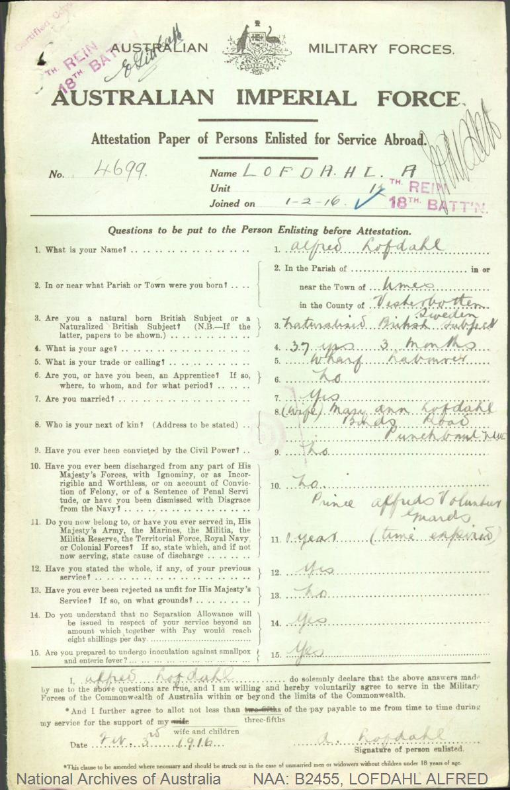One thing I like with my research is to really try to find all the facts that I can about certain individuals, and later on connect them to the terrain through other documents such as diaries, maps and similar documents.
I was just searching through AUSTRALIAN RED CROSS WOUNDED AND MISSING FILES, where I find files with very interesting and rich in facts about individuals, timings and locations.
Suddenly I came across the files about Oscar Horace Nelson, as his name was a typical Scandinavian name. I decided to look him up and below you will find the small story about Oscar and especially his link to Sweden.

I found the photo of Oscar Horace Nelson on Ancestry, and he looked quite thin and small on the photo, when he is wearing his uniform from the Australia Imperial Forces.
I quickly found some other pages on the web about Oscar Horace Nelson, which describes his story in detail and below you will find the links to those pages:
Below I will contribute to the story with facts about his Swedish father, Johan Nilsson, or John Nelson as he called himself in Australia. I will also mention some information about the terrain where Oscar fell, and the circumstances about his death.
His father Johan Nilsson was born in Hannas, Väsby Parish, in Malmöhus county, Skåne, Sweden, December 13th, 1849, and raised by his parents Lars Nilsson and Karna Larsdotter.
I have tried to find when Johan left Sweden, but is has been hard to find the specific emigration document, or emigration note in the Swedish Church books. I have found documents about when he was granted Naturalisation in Australia in 1893, at Port Adelaide, Australia. Johan was a sailor, as many of those Swedish born soldiers who stepped off in Australia and later joined The Australian Forces in WW1, for various reasons.
I have also found that he married Oscar’ mother Johanna Rodgers, later on Johanna Nelson, also called Annie. Johan and Johanna were married in Brompton, South Australia, in 1878.



Johan Nilsson and his wife are buried at the same cemetery, at Hindmarch Cemetery, South Australia.

But what happened to Oscar? The specific death of Oscar occurred January 7th, 1917.
Oscar was in-charge of a pack of Mules which were loaded with provisions. He had been leading the mules to Fleurs and Gueudecourt from Pozieres when in an instant, a shell exploded nearby. He was killed on the spot by shrapnel and debris.
Below there are some documents that describes the moments, described by some witnesses.


If we look at some maps we will find the area where he was buried, close to the dressing station near the HQ of the 12th brigade, AIF, which was the unit Oscar’s battalion belonged to. He was initially buried at the Switch Trench Cemetery, but later moved to his final resting place, Guards Cemetery, Lesboeufs, France, 16 km North-East of the town of Albert.
The HQ was established in the vicinity of the old German trenches, the Switch Trench and the Gap Trench, by the time Oscar was killed, according to the unit diary. The trenches were established South-East of the village of Flers as you will see on the maps below.




Next time, when I am in the area I will visit Oscar on his final resting place, and take my own photo of his headstone. Below you will find a snippet of another photo, from one of the links above, where you can find more info about Oscar and his adventure, before he fell on the battlefield along the Western Front.
May Oscar rest in peace.















